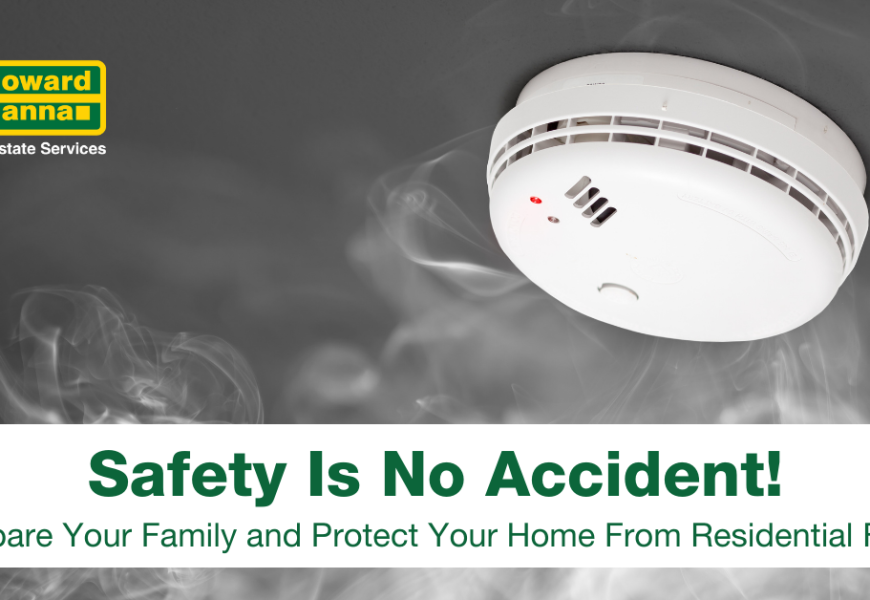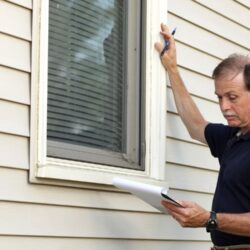Every year the National Fire Prevention Association (NFPA) hosts Fire Prevention Week to raise awareness of fire safety and prevention in residential homes. This year, Fire Prevention Week is October 3-9, 2021, with the theme, “Learn the Sounds of Fire Safety”.
We encourage our homeowners to freshen up on how to prevent fires in their own homes and if they have children, to teach them what to do in the event of a fire. Make this a family activity with our printable Fire Escape Plan to map out a route as a family and devise a plan.
Prevention
One of the first steps to fire prevention is ensuring that you have the correct number of smoke alarms in your home. How many smoke alarms do you need? You should have a smoke alarm on every level of your home and in every living space (including the basement). You should also have a carbon monoxide alarm in the basement, in a central location on every level of the home, and outside of sleeping spaces.
Be sure to test your alarms monthly and replace the batteries twice a year. Newer alarms may use 10-year lithium batteries, reducing the replacement of the batteries to every 10 years. An easy way to track the status of your alarms is to keep a chart noting where your alarms are located, when they’ve been tested, when the batteries have been replaced, and when the next round of maintenance on them is due.
Prevention Tip: Teach your family what a smoke alarm sounds like and how to react to it.
An important safety tool in any home is a fire extinguisher. Fire extinguishers should be located on every floor of the home, in a spot that is readily accessible in the event of a fire.
Escape Plan
Home evacuation drills should be practiced twice a year. Before you begin your drill, use our Fire Escape Map to draw out an evacuation route and meeting spot for everyone to follow. Go over the Fire Escape Map to ensure that everyone knows the two routes of how to escape and where the meeting spot outside of the home is.
According to the Red Cross, if a fire has started in your home, you may have as little as two minutes (120 seconds) to evacuate.
Things to practice during evacuation drills:
- General Escape
- Stay low and under any smoke when evacuating.
- Always feel the doorknob and door with the back of your hand before opening.
- Open doors slowly and be prepared to shut them quickly if heavy smoke/fire is present.
- Stop, Drop, Roll
- In the event your clothes catch on fire: immediately stop, drop to the ground, and roll over back and forth until the fire is out. Be sure to cover your face with your hands.
- If you cannot stop, drop, and roll, use a blanket or towel to smother the flames.
- If trapped in an upper level or you can’t exit your home:
- Cover any vents and cracks around the door.
- Signal through the window with light colored cloth or flashlights.
- Call 9-1-1 and let them know your location.
Always time your fire drills and remember: DO NOT go back into the house after you have escaped.
Include an Emergency Communication Plan in your drills. Make a list of whom to contact in the event of a fire and be sure your family knows when the communication plan is to be used during an escape.
- When you are safely outside and at the designated meeting spot, call 9-1-1.
- If someone or any pets are trapped in the home, be sure to tell the 9-1-1 operator and firefighters.
- After you have called 9-1-1 and communicated with the firefighters, you can begin to contact anyone else on your emergency communication list.
Fire-safe Habits
According to the Pennsylvania Office of the State Fire Commissioner, children cause 100,000 residential fires annually. If you have children in your household, it is important to teach them that fire is a tool, not a toy. Heat and flames are a natural part of many aspects of our lives, that’s why developing fire-safe habits is the best way to reduce the risk of fire in your home.
- Never leave a burning candle (or any lit flame) unattended – flameless candles are suggested for homes with children
- Keep items three feet away from anything that produces heat
- Fully douse cigarettes and cigar butts with water before throwing them away and use large/ deep ashtrays
- Turn off portable heaters when leaving a room or going to sleep
- Keep matches and lighters out of reach from children
- If the power goes out, use flashlights instead of candles
- Sleep with your bedroom door closed
- Keep digital copies of valuable documents and records (i.e., birth certificates, SS Cards, Passports, etc.)
- If available, install an automatic fire sprinkler system in your residence
Reducing Risks
According to the NFPA, heating equipment causes 48,530 fires a year and electrical malfunction causes 44,880 fires a year. These are some ways you can reduce risks:
- Ensure all heating sources are in clean and working order
- Check all electrical wiring and repair if needed. Replace frayed extension cords, exposed wires, and loose plugs
- Clear all high-traffic areas of any wiring – do not keep any wiring under rugs
- Ensure all outlets have cover plates
- Do not overload outlets or extension cords
- All combustible materials should be stored in open areas away from heat sources
- Never use a stove range or oven to heat your home
Staying Fire-safe while cooking
Cooking causes 50% of residential fires annually, with unattended cooking being the leading cause. These are some ways that you can reduce your risk while cooking:
- Always stay in the kitchen when frying, grilling, or broiling.
- Always stay in the home when simmering, baking, roasting, or boiling.
- Keep pets and children away from cooking surfaces
- Always keep the stove area clean and clear from anything that can catch fire
- Never pour water on a grease fire










